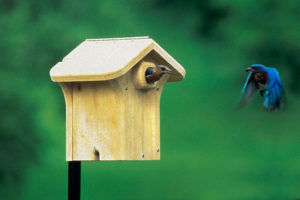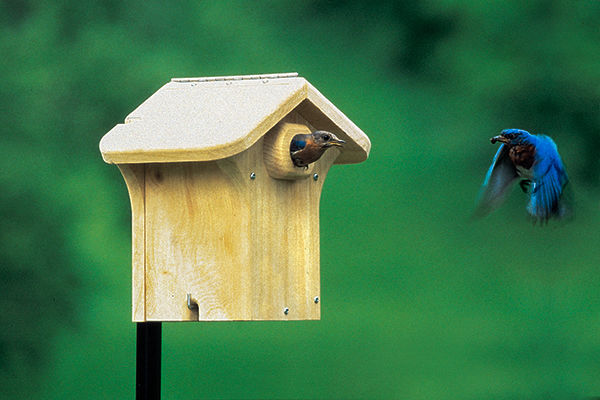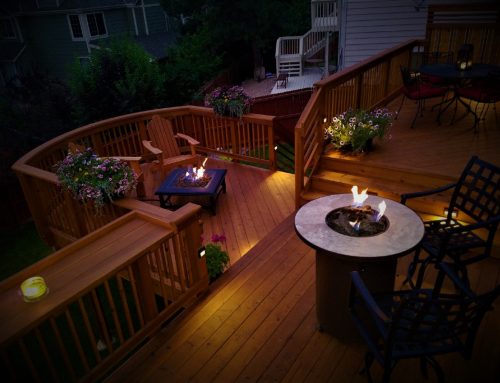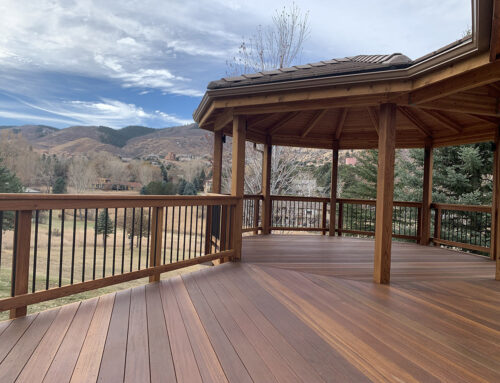Welcome to our second in a series of articles about backyard birding “on deck!” You can find the first article here
You may be thinking, “I want to attract birds such as robins, wrens and hummingbirds to my yard, but I don’t want woodpeckers poking holes in my house!” Well, of course you don’t! No one wants holes in their house, but according to Scott Menough, co-owner of Wild Birds Unlimited in Lakewood and host of BirdTalk radio on KNUS and KDMT, there’s nothing to worry about.
“We don’t look at woodpeckers as pest birds, although we may be concerned about some of their activities. We may want to modify behaviors so people can enjoy these birds. The little downy woodpecker is one that people often enjoy watching,” Menough said.
“If woodpeckers start making holes in the side of your house, put up a [northern] flicker-specific nest box and these birds will guard your house – flickers are territorial and they’ll keep other birds from pecking on your house. You would mount the flicker nest box right over a hole they’ve been trying to make into the side of your house – they’ve already decided where they want to nest next. We find it most effective to put the nest box right there,” he said.
from pecking on your house. You would mount the flicker nest box right over a hole they’ve been trying to make into the side of your house – they’ve already decided where they want to nest next. We find it most effective to put the nest box right there,” he said.
Another issue with woodpeckers is the sounds they make when they’re “drumming” up against a metal chimney cap or gutter. Menough said that they do this when they’re trying to attract a mate or protect territory from other males.
“They’re trying to expand the range of the sound that they’re making. I usually recommend putting something on the chimney cap or gutter to destroy the resonance on that piece of metal, for instance, a piece of duct tape will do the trick. They can also drum up against a shake shingle (a basic wooden roof shingle), if it’s loose, that’ll make a lot of noise, too. You might have to secure the shingle if it’s vibrating too much,” Menough said.
When it comes to shelter, birdhouses come with different size holes which determine the size of bird that can use a particular structure.
“If you want a small bird to nest, you use a birdhouse with a small hole,” Menough said.
But keep in mind that not all birds use birdhouses, for instance blue jays and robins nest on tree branches.
“We have what’s called “nesting shelves” or “nesting perches” for robins, finches, chickadees and wrens. These have a roof and shelf but no front. You’ll definitely enjoy watching these birds raising their families,” he said.
“House finches love hanging planters. If you want to enjoy finches, and not worry about them nesting in a hanging planter, you can offer them an alternative. Just mount these nesting shelves on a  fence on the side of the house against a tree. They’ll be coming around your home and yard to nest and raise their families,” he said.
fence on the side of the house against a tree. They’ll be coming around your home and yard to nest and raise their families,” he said.
Make sure to get your nesting boxes, nesting trays and birdhouses up soon. Nesting takes place for a short time in spring and early summer, compared to bird feeding which is year-round.
Stay tuned for our third installment of birding “on deck:” Bird feeders and Food







Leave A Comment